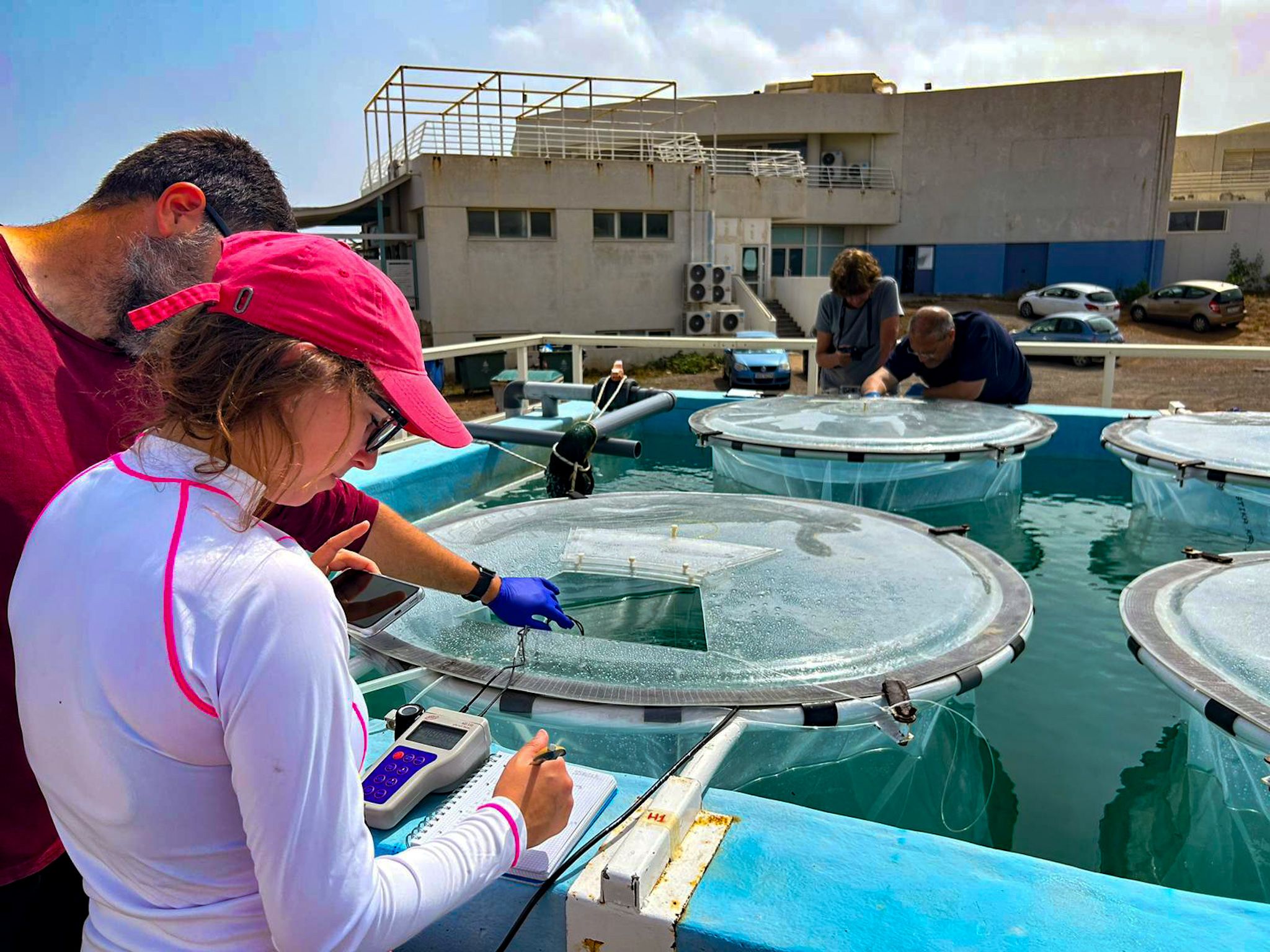Facilities
Transnational Access
Metadata & Data
Papers & Reports
Knowledge Base
AlkalOcean-OLIGOS experiment at CRETACOSMOS facilities in Heraklion
14th June 2023
Atmospheric carbon dioxide (CO2 ) levels have reached historically unprecedented levels, higher than at any time in the past 800,000 years, due to anthropogenic emissions. The strategy to respond to climate change includes primarily a drastic reduction of CO2 emissions, however, the current slow mitigation rate suggests to explore Carbon Dioxide removal (CDR) technologies as additional tools to meet the global goal of limiting warming to well below 2°C. Ocean Alkalinity Enhancement (OAE) is one of the most promising CDR technologies, allowing active removal of atmospheric CO2 by improving the sink capacity of the ocean. OAE can be obtained by discharging alkaline material in the wake of ships as a side activity of normal maritime traffic, but research is needed to assess potential negative effects on the marine communities.

Photo by: Alejandro Penin
In the context of OAE research, the OLIGOS (Ocean Liming in an OLIGOtrophic Sea) mesocosm experiment is ongoing at the CRETACOSMOS facilities in Heraklion, on the northern coast of Crete, Greece, in the frame of AlkalOcean, funded by the AQUACOSM- plus Transnational Access (TA) program and by the OACIS initiative of Fondation Prince Albert II de Monaco. The experimental design includes 9 mesocosm tanks of about 3 m3 each, for testing the response of the natural eastern Mediterranean waters to two different treatments of Ca(OH)2 slurry (High and Low concentrations). The experimental tanks are filled with natural coastal seawater and are treated with slurry at days 1, 3, 5, 7, 9, 11 in order to simulate the chronic disturbance expected from repeated discharge of SL from ships. We use intense air bubbling to generate temporary surface water turbulence that simulates water mixing in the wake of ships during slurry dispersion. The possible precipitation of carbonate crystals is assessed by collecting the settling particles into a sediment trap at the bottom of each mesocosm. The research investigates the response of the most relevant components at the basis of the trophic web, playing also a primary role in marine carbonate equilibria: DOM, plankton, with particular interest in calcareous primary producers (coccolithophores) and benthic calcareous primary producers (maerl collected from a local bed). During each treatment the carbonate equilibrium and the dissolution kinetics are monitored by measuring temperature, conductivity of the solution, and changes in pH. PAR (Photosynthetically Active Radiation) is monitored and visible light is recorded by a dedicated sensor in each tank. The response of the C system and the biological community to the slurry addition is assessed after each treatment by analyses of alkalinity and DIC, DOC and POC concentrations, and optical properties (absorption and fluorescence) of the chromophoric fraction of DOM. Plankton primary production and community respiration, biomass and photosynthetic efficiency, community composition and taxa dominance, are assessed by optical and SEM microscopy, flow cytometry, chlorophyll concentration, changes in dissolved O2 concentration after 24 h light/dark in situ incubations, a zooplankton grazing experiment, and metagenomics. The response of the benthic calcareous red algae will be assessed by checking for possible pigment alteration, thallus integrity at the microscale, and epiphyte cover. The OLIGOS experiment is performed by an international team led by Prof. Daniela Basso from the University of Milano-Bicocca (Italy), and coordinated by Dr. Paraskevi Pitta, HCMR (Greece). The research team is composed of scientists from seven different countries, including three Italian Institutions (University of Milano-Bicocca, Politecnico di Milano and CNR-IBF in Pisa), the Hellenic Centre for Marine Research in Crete, Greece, the Marine Research Centre at the University of Vigo (CIM-Uvigo, Spain), the Consejo Superior de Investigaciones Científicas - CSIC (Barcelona, Spain), CONICET-CESIMAR (Argentina), the Norwegian
University for Science ad Technology - NTNU (Trondheim, Norway), MARBEC (Montpellier, France) and the University of Zagreb (Croatia).
Stay tuned for updates on our AlkalOcean-OLIGOS experiment!
For further information contact: daniela.basso@unimib.it